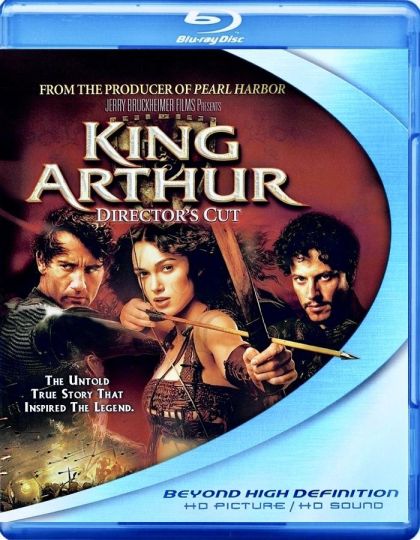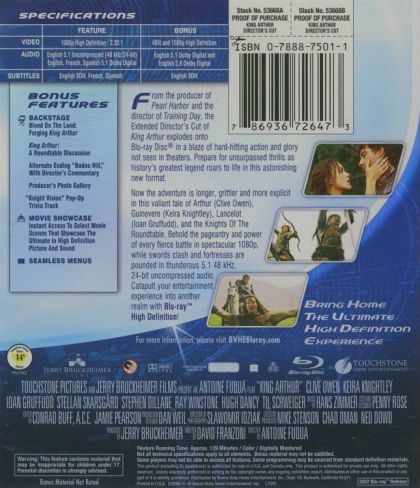King Arthur Films
| 1. | Excalibur | 1981 |
| 2. | First Knight | 1995 |
| 3. | Mists Of Avalon | 2001 |
| 4. | King Arthur | 2004 |
| 5. | King Arthur: Legend Of The Sword | 2017 |
King Arthur – Director's Cut

An ambitious attempt to wed the legend of King Arthur and his Knights of the Round Table with known historical facts of the era, this action adventure drama begins with the fall of the Roman Empire in 450 A.D. as Roman armies flee the British Isles. Arthur (Clive Owen), a heroic knight and devoted Christian, is torn between his desire to travel to Rome to serve his faith and his loyalty to the land of his birth. As England falls into lawlessness, Arthur throws in his lot with a band of knights who hope to restore order to their fair and pleasant land and hopes to win freedom for his comrades, among them Lancelot (Ioan Gruffudd), Galahad (Hugh Dancy), Tristan (Mads Mikkelsen), Gawain (Joel Edgerton), Bors (Ray Winstone), and Dagonet (Ray Stevenson). In time, Arthur and his men join forces with Merlin (Stephen Dillane), a shaman whose band of renegade knights were often pitched in battle against Roman forces. Forming a united front as loyal Englishmen against the invading Saxon armies, Arthur, Merlin, and the brave and beautiful Guinevere (Keira Knightley) are determined to unite a sovereign Britain under one army and one king. — Mark Deming
Based on a more realistic portrayal of "Arthur" than has ever been presented onscreen. The film will focus on the history and politics of the period during which Arthur ruled -- when the Roman empire collapsed and skirmishes over power broke out in outlying countries -- as opposed to the mystical elements of the tale on which past Arthur films have focused. Written by Scott Summerton
In 400 AD, the Roman Empire extends to Britain and the Romans became impressed with the fighting skills of the warrior Sarmatian people, who are spared, but must send their sons to serve Rome in the cavalry for fifteen years. Only after these services are these knights free to return home. King Arthur and the Knights of the Round Table have their last mission before achieving their freedom. Written by Claudio Carvalho, Rio de Janeiro, Brazil
Although the legend of King Arthur has not been historically established as fact, this film will attempt to place King Arthur within his possible historic context, smack between the fall of the Roman Empire (just a few hundred years after Gladiator) and the long road through the Dark Ages (roughly set in the 5th or 6th centuries). The magic and fantasy of the legend will be absent (Merlin may still be around; just not performing the magic seen in Excalibur). Written by Payne
The Roman Empire is stretched across many nations, including Britain. In their conquest for more land, the Romans went into Sarmatia where they fought the very brave Sarmatian cavalry. The Romans, impressed by the Sarmatian's weaponery and fighting skills, included them into their army as knights. After 15 years of serving and fighting for the Roman Empire the Sarmatian Knights, lead by Arthur/Artorious Castus, are about to receive their freedom as the Romans are leaving Britain. But the Knights must carry out one final order before they are free. A Roman priest and his family, especially his son Alecto, must be rescued from the invading Saxons. But there is another danger lurking on the road to freedom - the Woads, British rebels who hate the Romans. Written by Andreas Furumo
This original portrayal of "Arthur", as opposed to the mystical elements of the tale in past Arthur films, uses names and other elements from the traditional, medieval, Catholic Arthurian cycle in a very different, yet historically less implausible, almost realistic plot. Around 400 AD, the Roman empire, stretched across many nations, from Arabia to Britain, collapsed and skirmishes over power broke out in outlying countries. The conquering Romans become impressed with the weaponry and fighting skills of the warrior Sarmatian people, which have to send their sons to serve Rome fifteen years in the cavalry before these knights may return home. Arthur is Artorius Castus, whose future Knights of the Round Table, eager to achieve their freedom, are charged by bishop Germanius with one final task before their discharge: a Roman estate tyrant and his family, especially adolescent son Alecto, who is selected for a great future in Rome, must be rescued thereto from the invading Saxons, whose ruthless warrior-king orders his conquering tribal army to pillage and burn entire villages down. But there is another danger lurking on the road to freedom - the Woads, Celtic Britton rebels who hate the Romans, lead by the 'magician' Merlin, who however realizes Rome is no longer the main threat and offers Artorius a novel alliance after sparing his life in an ambush. Written by KGF Vissers
SYNOPSIS
Apparently historians agree that the classical 15th century take on King Arthur was based on a real hero named Artorius Castus who lived a 1,000 years earlier during the Roman occupation. At the beginning of the film, Lancelot takes up this story in a voiceover, saying by 300AD the Roman Empire stretched from Arabia to Britain but they were not satisfied and had attacked the powerful Sarmatians to the east. At the end of the 4th day of intense fighting, only a few Sarmatian cavalry were left. However the Romans had been impressed with their bravery, and had spared their lives on two conditions first they were incorporated into the Roman military and second their children and childrens' children were also pressed into service.
So in 452AD we see Lancelot as a young lad being taken into service - around the same time a young Arthur was being groomed to take over from his father as leader of the Sarmation Knights. With his father away a lot, the priest Pelagius had became his beloved guardian, prior to travelling to Rome to spread his message of free will and freedom which was blasphemous to the Pope.
The Knights under Arthur serve their 15 years in Roman Britain south of Hadrians Wall and the film jumps to 467AD as Arthur and the remnants of his Knights ride out to meet Bishop Germanius and his Roman escort who is coming to present their freedom papers for travel throughout the Roman Empire. The Bishops escort is attacked by Merlin's Woads and the Knights arrive in time to turn the tables on the attackers. They return to the Hadrian's Wall garrison, but not before Arthur surprisingly spares the life of a Woad -watched from the trees by Merlin.
Arthur offers Germanius his quarters to refresh himself. Whilst there he notices a disc of Arthur's depicting Pelagius and contemptuously tosses it on to the floor, breaking it. He is further horrified when he comes to the meal to find a round table where he could not assume a position of head of the table. This had been introduced by Arthur who felt to follow Pelagius teaching, it was necessary for all to have equal placements at the table. However there are many empty places and all that survive are Arthur (Clive Owen), Lancelot(Ioan Gruffudd),Tristan, Gwain, Galahad, Bors (Ray Winstone) and Dagonet.
Bishop Germanius firstly dismays the knights by reporting that the Romans would now be pulling out of Britain and that a large Saxon army had landed and would probably take over the country. So for what had they risked their lives? He then dismisses the others to explain to Arthur alone the doubled edged reason for his visit : the Marius Honorius family, in particular his son Alecto who was the Pope's favourite godson and pupil and a possible papal successor, were in danger of capture by the Saxons, so Arthur and his men have been ordered by Rome to effect a rescue before their freedom papers can be served. Arthur is furious on behalf of his fellow Knights at this betrayal of their freedom, being sent on their most dangerous mission yet as they would need to travel north of Hadrian's wall. The wily Germanius says it's for the Church whom Arthur loves and surely they would not balk at rescuing a young boy.
Arthur goes into the courtyard as Bors' partner Vanora sings a hypnotic song about home. Arthur is spotted but he dashes their hopes when he explains their mission. Dagonet implicitly trusts Arthur and prepares for the mission. The others in varying degrees of reluctance and anger follow his example and the next day they set off through Hadrian's Wall.
Meanwhile Cerdic's Saxons have landed. They burn every building and kill everyone they come across. They are joined by a Woad spy who tells them of the important Roman family. Cerdic (Stellan Starsgard) sends his son Cynric with his men to capture the family and then rejoin his father at Hadrian's wall.
Arthur's men go deep into Woad territory to reach the Roman family and are soon ambushed by the Woads. As they move in for the kill, Merlin gets word of the Saxon invasion, and to their disgust, he pulls the Woads back from the ambush and Arthur and his men are bemused to find they are free to continue their journey.
They reach the family and the father Marius at first refuses to go but Arthur forces them for his men's freedom sake. He then learns of Marius' harsh dealings of the peasants which cuts across his Pelagian ideals and he sets free their local leader and orders them to prepare for the march south. They are about to depart,hearing the Saxons' drums, when Arthur becomes suspicious of a bricked up building. There he finds Woads with all but two starved and tortured to death. He rescues the two survivors - Guinevere (Keira Knightley) and a young boy - and takes them on their escape route from the Saxons. Marius is furious but Arthur fells him and they all leave, with Marius threatening reprisals when they get back to Hadrian's wall.
Guinevere recovers on the journey and plays with both Arthur's and Lancelot's feelings, telling them that the Britains not the Romans are their real heritage.
Arthur knows they must rest and they spend the night in a forest. He follows Guinevere who brings him to Merlin. He accuses Guinevere of leading him into a trap but she says Merlin is not there to kill him. Merlin explains that his men see Arthur more Britain than Roman and as their only leader against the Saxon invasion.
As day breaks Marius grabs the Woad boy and threatens to kill him. Guinevere calmly shoots Marius with her bow and arrow and his men are given the choice of surrendering or dying. They choose the former. Tristan arrives and says the Saxons are much closer and they must leave. As they journey, Arthur seeks Alecto's forgiveness for his father's death. However Alecto calmly says not only had his father lost his way but stuns Arthur by saying he fights for a Rome that doesn't exist and that Pelagius had been excommunicated and killed under Germanius' orders for heresy the previous year.
They reach a glacier and the Saxons are right on their tail. They dismount from their wagons and Arthur leads them all carefully over the cracking ice. He then sends the rest on while the 7 Knights and Guinevere take up a position at the end of the glacier with bows and arrows to await the Saxons.
As the Saxons approach, the Knights starting killing those on the flanks forcing the advancing Saxons to bunch but still the ice doesn't break up. Arthur realises the ice is not going to break and gives the order to draw swords, Dagonet rushes forward with his axe and starts hacking away at the ice. The archers try to protect him but eventually Saxon arrows get through and he dies just as his last blow breaks up the ice. Many Saxons drown and the rest cannot follow them as a sad Arthur and his men retrieve Dagonet's body, catch up with column and lead them to safety. Cynric and his survivors return to his father who strips him of his leadership and humiliates him.
A very belligerent band of Knights snatch their freedom papers from Germanius and then bury Dagonet. After the funeral Guinevere sits with Arthur and presses the point of how his allegiance should really be with this island especially now that the Romans have tricked him.
That night Guinevere comes to his bed and while they are making love, Arthur is summoned to the wall where he witnesses the Saxons' arrival.
Arthur is now convinced that he should remain but he releases the Knights from their allegiance to him and sends them away with Germanius and the Roman garrison while he and the villagers prepare their defences. They are joined by Merlin and the Woad archers led by Guinevere.
Cerdic is desperate to meet this Arthur, the name he has continually heard since he landed, and under cover of a truce he meets him face to face, finally deciding that Arthur is the first man on this island worth killing.
As Arthur goes back behind Hadrian's wall, an invigorated Cerdic watches as the gates to the Wall mysteriously open. He sends an advance party of Saxons (Cyrnic's survivors but without Cyrnic) forward to soften up Arthur's men. Meanwhile as the retreating Romans march away, the remaining Knights' horses are unsettled by the sound of the Saxons beating on their war drums. The Knights look at each other and know they have to re-join Arthur but this time it is of their own volition.
The first wave of Saxons are annihilated by a combination of the Woad archers and the Knights so Cerdic leads his remaining men into the final bloody battle. This time the big siege engines are brought in by Merlin to support Arthur. Lancelot and Cyrnic kill each other, Cerdic pointedly kills Tristan in the sight of Arthur who charges Cerdic and they fight to the death - Cerdic's death. The Saxons are annihilated at the place now known as Badons Hill.
Arthur is grief stricken over Lancelot's death and says he's let them all down but the survivors Gwain, Galahad and Bors all stand by him. In the final scene Merlin marries Arthur and Guinevere and Arthur is proclaimed King to the joy and support of Woads and Knights alike.
Cast View all
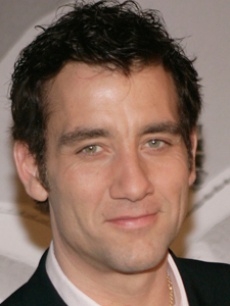
|
Clive Owen | Arthur |
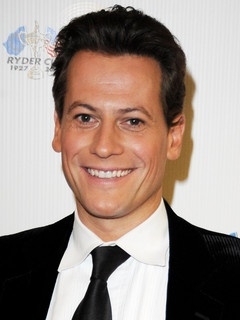
|
Ioan Gruffudd | Lancelot |
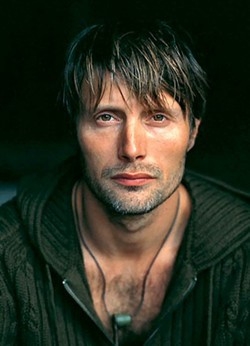
|
Mads Mikkelsen | Tristan |
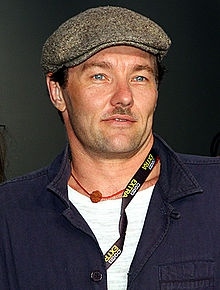
|
Joel Edgerton | Gawain |
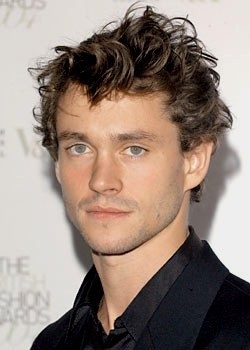
|
Hugh Dancy | Galahad |
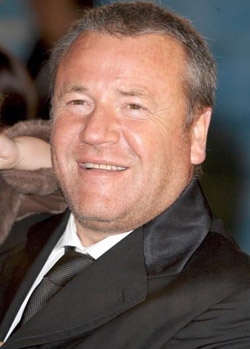
|
Ray Winstone | Bors |
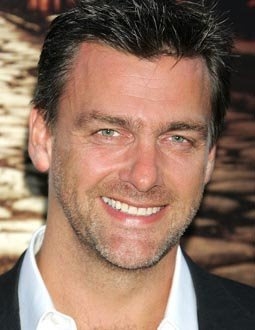
|
Ray Stevenson | Dagonet |
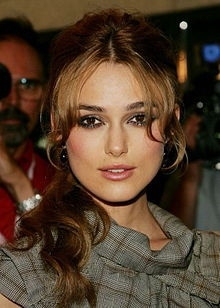
|
Keira Knightley | Guinevere |
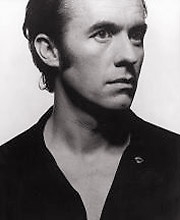
|
Stephen Dillane | Merlin |
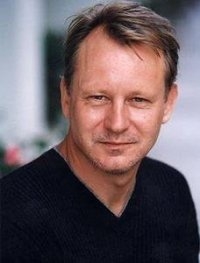
|
Stellan Skarsgård | Cerdic |
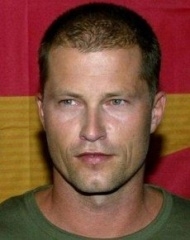
|
Til Schweiger | Cynric |
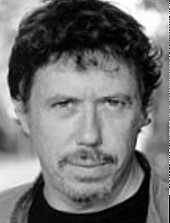
|
Sean Gilder | Jols |

|
Pat Kinevane | Horton |
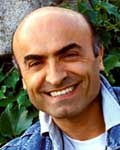
|
Ivano Marescotti | Bishop Germanius |
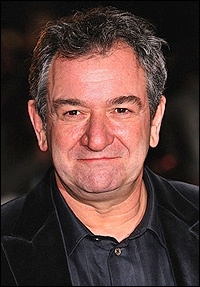
|
Ken Stott | Marius Honorius |

|
Lorenzo De Angelis | Alecto |

|
Stefania Orsola Garello | Fulcinia |
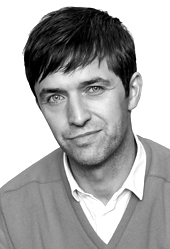
|
Alan Devine | British Scout |
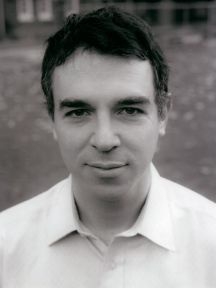
|
Charlie Creed-Miles | Ganis |
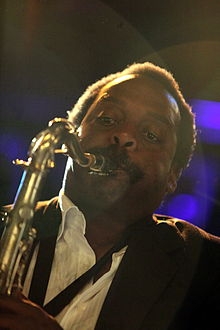
|
David Murray | Merlin's Lieutenant |

|
Ned Dennehy | Mental Monk |
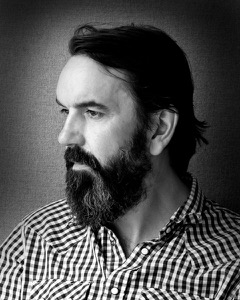
|
Phelim Drew | Obnoxious Monk |
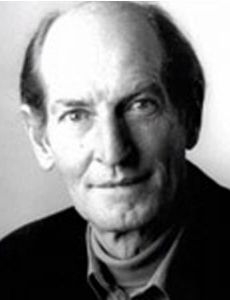
|
Des Braiden | Third Monk |

|
Malachy McKenna | Cerdic's Scout |
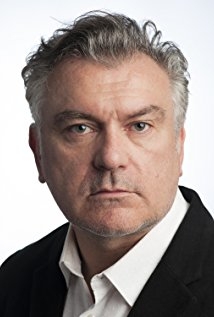
|
Brian McGuinness | Cerdic Officer |
Crew
| Director | Antoine Fuqua |

|
| Writer | David Franzoni | |
| Producer | Jerry Bruckheimer, Ned Dowd, James Flynn, Bruce Moriarty, Morgan O'Sullivan, Chad Oman, Selwyn Roberts, Pat Sandston, Mike Stenson, Paul Tucker | |
| Musician | Hans Zimmer | |
| Photography | Slawomir Idziak | |
Edition details
| Edition | The Director's Cut |
|---|---|
| Nr Discs | 1 |
| Screen Ratios | 2.35 Wide Screen |
| Audio Tracks | Dolby Digital 5.1 - English Dolby Surround - French English |
| Subtitles | English | English for the hearing impaired | French | Spanish |
| Layers | Single side, Dual layer |
| Edition Release Date | Dec 21, 2004 |
| Regions | Region A |
Personal
| Owner | Kerry & Dawn |
|---|---|
| Location | Movies-04 |
| Storage Device | TD 09 |
| Purchased | On Dec 28, 2004 |
| Watched | Feb 13, 2021 |
| Quantity | 1 |
| Index | 122 |
| Added Date | May 17, 2015 05:38:56 |
| Modified Date | Apr 17, 2024 00:46:01 |
Notes
| Version | Run Time |
| Theatrical Edition | 2:06 |
| Director's Cut | 2:22 |
The film was originally envisioned and shot as an R-rated piece with corresponding graphic violence. However, after the picture had been edited, Disney executives demanded it be changed to a PG-13, hence necessitating a lot of effects work to remove the blood from the battle scenes. Additionally, a number of scenes were removed and rearranged, and some new scenes were added. In total, the Director's Cut runs roughly 15 minutes longer than the theatrical cut. These additions include:
- The scene where young Lancelot (Elliot Henderson-Boyle) leaves his village in longer.
- a scene of young Arthur (Shane Murray-Corcoran) with his mother (Stephanie Putson), and then a scene where he discusses freedom with Pelagius (Owen Teale) whilst he watches the young Lancelot arrive on the hilltop.
- During the first battle, aside from the additional blood that was digitally removed from the theatrical version, numerous quick shots have been added. These include:
- Picts dragging Romans off their horses and killing them;
- a Pict slashing at a horse with his sword, causing it to fall;
- a Pict decapitating a soldier and holding his head aloft, only to be beheaded himself from behind;
- a Pict hit with an arrow;
- a Pict impaled on a spear;
- a Pict hit in the back with an arrow whilst trying to get to the Bishop;
- a scene of a Pict being hit in the eye with an arrow;
- a scene of Lancelot (Ioan Gruffudd) decapitating a Pict by using his swords like a scissors;
- a scene of Bors (Ray Winstone) fighting with his 'gloved knives';
- a scene of Bors stabbing a Pict in the throat.
- After the battle, in the theatrical version, the fake bishop (Bosco Hogan) has an arrow in his chest;
- in the Director's Cut, it is in his head.
- A scene where the knights approach the real Germanius (Ivano Marescotti) with their weapons drawn, before realizing that all is well and sheathing them.
- The conversation between Germanius and Arthur (Clive Owen) is longer.
- A scene of the knights toasting their fallen comrades at the Round Table.
- A scene where Germanius visits the knights as they prepare to leave, and they show him their disapproval of the mission.
- The Director's Cut does not contain the scene where the knights sit around a camp fire talking about their prospective lives in Sarmatia.
- A scene where some dead soldiers are found on the side of the road.
- A conversation between Lancelot and Guinevere (Keira Knightley) about England and the weather.
- Another conversation between Lancelot and Guinevere, this time at night, where they discuss family and faith. The scene ends with Lancelot telling her he would have left her in the dungeon.
- The first conversation between Merlin (Stephen Dillane) and Arthur has been edited differently with different takes used.
- An aerial shot of Hadrian's Wall
- A scene where Dagonet (Ray Stevenson) is buried.
- A scene of Bors sitting at Dagonet's grave, getting drunk.
- The sex scene between Guinevere and Arthur is in a different place in both versions of the film. In the theatrical version, Arthur is seen in full battle armor, examining the broken image of Pelagius, when he is alerted that the Saxons are heading towards Hadrian's Wall. He runs outside, but when he appears, he is hastily putting on his shirt, and his hair is disheveled, thus creating something of a continuity error. The sex scene follows this scene. In the Director's Cut however, after the conversation between Arthur and Guinevere where they discuss his morality, they begin to have sex only to be interrupted with the news of the Saxons. The scene then cuts to Arthur appearing on the wall, putting on his shirt. As such, the scene where he is examining Pelagius's image is absent from the Director's Cut. The scenes have been edited together differently as well, with the sex scene in the Director's Cut being slightly longer than the theatrical version.
- A scene where Cynric (Til Schweiger) is demoted for his failure during the ice battle. His frustration is much to Cerdic's (Stellan Skarsgård) amusement.
- A scene of the knights leaving Hadrian's Wall amidst hundreds of small fires set by the Saxons.
- The scene of the confused Saxons in the fog is longer, with more Saxons being chopped down, including one having his arm severed.
- The scene of the sole Saxon survivor (Joe McKinney) running back to the Saxons is longer.
- During the final battle, aside from the additional blood that was digitally removed from the theatrical version, numerous quick shots have been added. These include:
- a scene of a Saxon impaled by an ax in his chest;
- a scene of Guinevere stabbing a fallen adversary;
- a scene of a Saxon being stabbed in the throat;
- a scene of Guinevere stabbing a Saxon in his crotch;
- a scene of Arthur ramming his sword into a Saxon's throat;
- a scene of Gawain (Joel Edgerton) being shot in the chest with an arrow and pulling it out;
- the scene of several female warriors overpowering a Saxon is much longer and more violent as the women begin to literally tear him to pieces;
- a scene of Tristan (Mads Mikkelsen) slowly approaching Cerdic;
- a scene of Bors being stabbed in the back but continuing to fight;
- a scene of Ganis (Charlie Creed-Miles) fighting a Saxon inside the Wall;
- a scene where a Saxon is stabbed in the face;
- the battle between Tristan and Cerdic is longer and more graphic;
- the scene of Lancelot being wounded is in slow motion;
- the scene of Cerdic's death is longer and includes a new conclusion where he and Lancelot crawl towards one another and Lancelot stabs him through the throat;
- the fight between Cerdic and Arthur is slightly longer, with Arthur stabbing Cerdic a final time after Cerdic has whispered Arthur's name.
The Truth About Arthur, November 17, 2004
Reviewer: J. Matthews
Hi - John Matthews here - I was the Historical Advisor on the film. I just want to weigh in with my own take on some the nonsense which has been written about the historical innacuracies in the film. There were some inevitably - but not many, and mostly so small as to pass unnoticed. After all, we were telling a story, not writing a documentary. That said, I can promise you that the story of Arthur as told in the movie, is about as close as you'll ever get to the truth about Arthur. There really was an historical Lucius Artorius Castus and he really did lead a band of Sarmatian warriors from a land roughly between the Black and Red seas today (and no,that's not Russia -which didn't even exist at the time). These men were posted to Britain - about 5500 of them - and they left an indelible stamp on the memory of the British people. Their stories, and the myths they knew and lived by, were the seeds from which later, Celtic stories of Arthur grew. So we are not saying Arthur wasn't a Celt any more than we are saying he was a Sarmatian for that matter - just that as a Roman officer, stationed on Hadrian's Wall, here in the UK - his deeds and valor paved the way for all the later Arthurs. The problem has been that the Arthurian industry, which began in the 11th century, established itself so firmly in our hearts and minds that we can now only think of that Arthur. The reality, as you will see in the film, is very different. So,if you want to know how the story of Arthr really got under way - before the magic and the fantasy got in there - see this film - the best Dark Age movie ever to come out of Hollywood! And if you still want to know more read C Scott-Littleton and Linda Malcor's book 'From Scythia to Camelot' (Linda was my collegue in backing up the history for the movie)or watch out for books by each of us in the pipeline,
Links
| IMDB |
| Amazon US |
| All Movie Guide |
| SendIt |
| SendIt |


 English
English  Nederlands
Nederlands  Deutsch
Deutsch  Français
Français  Español
Español  Magyar
Magyar  српски
српски  Dansk
Dansk  Italiano
Italiano  Svenska
Svenska  Slovenčina
Slovenčina  Português
Português 
